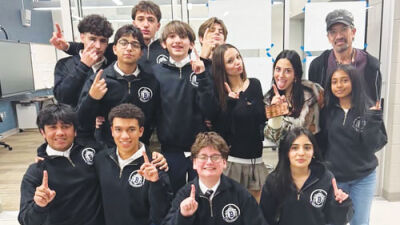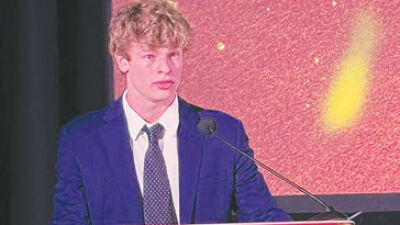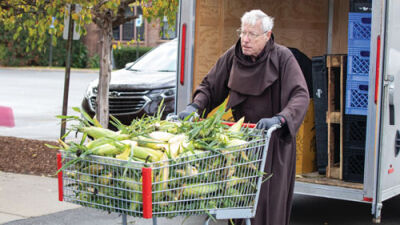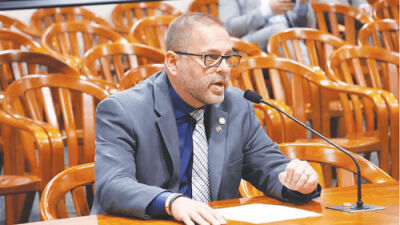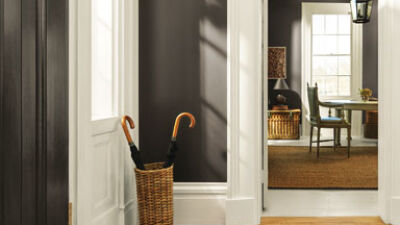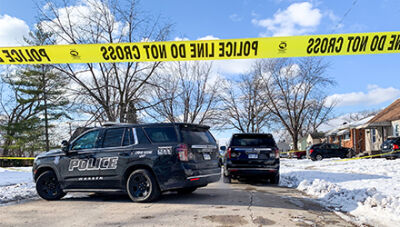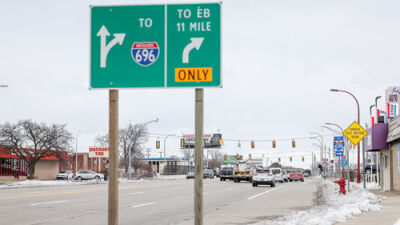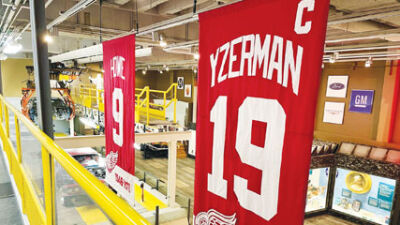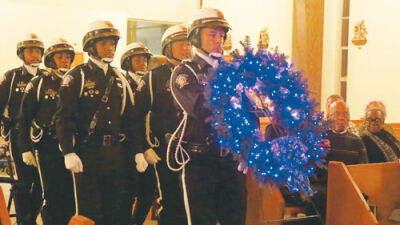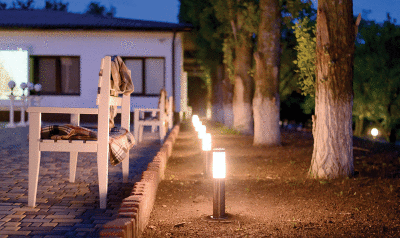
The Franklin Village Council discussed a new outdoor lighting ordinance recently.
Shutterstock image
FRANKLIN — At a special workshop Nov. 21, the Franklin Village Council met to discuss amending the community’s outdoor lighting ordinance.
The council discussed a new ordinance to amend and add sections to the building and housing code for the purpose of protecting public health, safety and welfare — particularly light that shines on others’ property.
Planning Commissioners Nicholas Bevins and Stuart Wooters gathered data from the village by riding around at night on the public streets and using a light meter to measure the outdoor lighting of residents’ homes. Through their observations and a review of other cities’ ordinances, they came to a figure of a 0.2-footcandle limit.
According to the definition portion of the ordinance, a footcandle is “a unit of measure expressing the quantity of light received on a surface. One footcandle is the illuminance produced by a candle on a surface one-foot square from a distance of one foot. A light meter provides the most reliable means of measuring footcandles.”
“If the light originates on one property and passes over to another property, exceeding the 0.2 -footcandle limit, that would be considered excessive light,” Planning Commission Chairman Pete Halick said at the meeting.
One of the main objectives is to quantify the current ordinance. Rather than a measurement of light, the current ordinance restricts lighting that casts shadows on adjourning properties.
Bevins said their goal was to establish where the shadow level occurs from the front of the house, putting a number to it, and applying it to all property lines.
Code enforcement would need a light meter to determine if residents’ lighting is complying.
There were concerns during the meeting that revolved around the variances between different light meters, the height at which the measurement is taken, and the effect on the reading of surrounding light sources.
While these questions were not fully resolved, solutions included purchasing a high-quality light meter for the village, among other ideas.
“The biggest offenders seem to be really bright driveway lights that were, like, at the edge of the property where the bulbs were unshielded,” Bevins said at the meeting.
However, in his opinion, he said the village is overall already in high compliance with the possible new ordinance.
According to the drafted ordinance, prohibited outdoor lighting includes high-intensity lights for lighting, advertising or entertaining purposes; flashing and moving lights; unshielded lights; and recreational facility lighting. Further explanation of each prohibited lighting setup is included in the ordinance.
At the meeting, it was asked if current residents with intense lights would be grandfathered in, or if they would have to comply with a new ordinance.
Bevins said that since the existing ordinance prohibits light that casts shadows on other properties, many of these properties that this question was referring to may already be against the current ordinance.
The zoning and use of properties was also a topic brought up during this discussion, since the lighting ordinance had different limitations for residential and nonresidential properties.
While the new ordinance calls for residentially zoned properties to not exceed 0.2 footcandle, any other zoned property is to not exceed 0.5 footcandle.
Another question that was brought up was about how this ordinance applies to seasonal lights.
One of the exemptions listed in the new ordinance would be for temporary, low-illuminance seasonal lighting. They are exempt from regulations regarding fixture orientation and shielding, mounting height, and color correction, but high-intensity lights, and flashing and moving lights are still prohibited.
No votes are made during workshop meetings. The council left the discussion with a plan to further revise and discuss this new ordinance before bringing it to an upcoming regular council meeting.
 Publication select ▼
Publication select ▼
